Openings with a Promise – the Emotional Journey of Your Character
I love it when as a writer you realize that other creative people face similar struggles or challenges with their craft. Like when I attended the SCBWI conference in LA last summer, I was heartened to hear how Drew Daywalt, the author of the NY Times bestselling The Day the Crayons Quit, waited six years for his agent to find a publisher who ‘got’ his book and wanted to publish it.
 The Day the Crayons Quit
The Day the Crayons Quit by Drew Daywalt and Oliver Jeffers
Or like how Jon Klassen of I Want My Hat Back fame was stuck because:
“… I had a problem in that I didn’t like drawing characters. I like drawing scenery and inanimate objects and I especially liked it back then. The challenge of making a piece where the subject wasn’t a living thing was really fun, and I liked how quiet the effect was.”
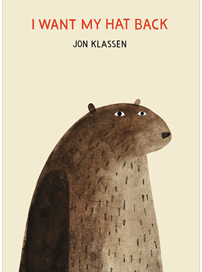 I Want My Hat Back by Jon Klassen
I Want My Hat Back by Jon KlassenI recently received a gift. It was one of my favourite kinds of books – the story of a fellow writer. As I savoured the book, its pages, beautifully designed windows into E.B. White’s life and writing, I realized a few things:
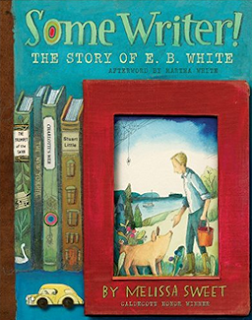
Some Writer! The Story of E.B. White
by Melissa Sweet • E.B. White kept a journal and he finished each entry by asking himself a question that he could think about as he was drifting off to sleep.
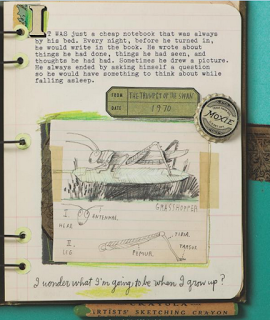 from Some Writer! The Story of E.B. White by Melissa Sweet
from Some Writer! The Story of E.B. White by Melissa Sweet Yes! This is such a good technique – to mull the questions of the day, of the story, of a stuckness that becomes unstuck in the subconscious of slumber. I love to do that too!
• In his column One Man’s Meat for Harper’s Magazine, he wrote in 1982 about the influence of moving to a farm in Maine, where “confronted by new challenges, surrounded by new acquaintances – including the characters in the barnyard who were later to appear in Charlotte’s Web – I was suddenly seeing, feeling, and listening as a child sees, feels and listens”.
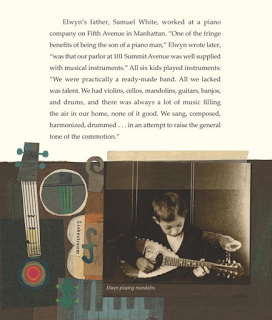 from Some Writer! The Story of E.B. White by Melissa Sweet
from Some Writer! The Story of E.B. White by Melissa SweetI thought about this. As I read on . . .
• It took E.B. White a year of revisions to settle on the iconic opening for Charlotte’s Web.
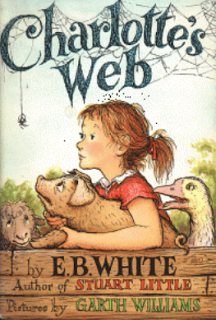 Charlotte's Web by E.B. White, illustrated by Garth Williams,
Charlotte's Web by E.B. White, illustrated by Garth Williams,published 1952
In Some Writer!, Sweet includes images of White's original manuscripts, complete with crossings-out and musings in the margins.
I learned that E.B. White tried at least six different tacks to nail the opening of his most famous book. First:
“Charlotte was a grey spider who lived in the doorway of a barn.”
Then: “I shall speak first of Wilbur.”
Then: “A barn can have a horse in it, and a barn can have a cow in it, and a barn can have hens scratching the chaff and swallows flying in and out through the door – but if a barn hasn’t got a pig in it, it is hardly worth talking about.”
After a year, White wrote: “At midnight, John Arable pulled his boots on, lit a lantern, and walked out the hoghouse.”
Next, he cut to the action: “Where’s Papa going with that hand ax?”
Which was shortened to: “Where’s Papa going with that ax?”
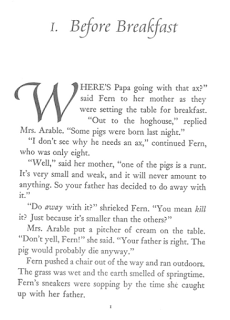 opening chapter from Charlotte's Web by E.B. White
opening chapter from Charlotte's Web by E.B. WhiteI was struck by this journey to find the way into the story. The story was there all along, wasn’t it, but it was only when White cut to the emotional core of the characters’ emotional journey and told it like child might experience it that it felt right.
In previous blogs about creating compelling openings and using “show, don’t tell”, I wrote about the importance of:
• showing readers through the character’s body language, action and dialogue
• including the answers to the questions who, what and where to create a compelling opening
• clear character motivation – why?
• creating vivid, detailed scenes
But, connecting these elements with
• the promise of the characters’ emotional journey and
• “seeing, feeling, and listening” like a child
is what will really hook readers into the story and get them to keep turning the pages.
When we read the opening line of Charlotte’s Web, these elements come together almost effortlessly. But the weren’t effortless at all . . .!
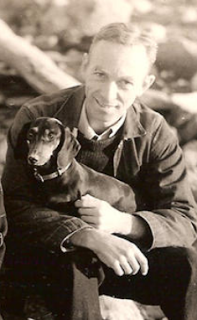 E.B. White with his beloved dog
E.B. White with his beloved dog Wow, some writer! ________________________
Natascha Biebow
Author, Editor and Mentor
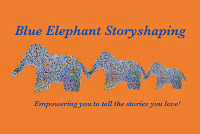 Blue Elephant Storyshaping is an editing, coaching and mentoring service aimed at empowering writers and illustrators to fine-tune their work pre-submission. Check out my small-group coaching Cook Up a Picture Book courses! Natascha is also the author of Elephants Never Forget and Is This My Nose?, editor of numerous award-winning children’s books, and Regional Advisor (Chair) of SCBWI British Isles.
Blue Elephant Storyshaping is an editing, coaching and mentoring service aimed at empowering writers and illustrators to fine-tune their work pre-submission. Check out my small-group coaching Cook Up a Picture Book courses! Natascha is also the author of Elephants Never Forget and Is This My Nose?, editor of numerous award-winning children’s books, and Regional Advisor (Chair) of SCBWI British Isles.
Published on February 26, 2017 19:30
No comments have been added yet.



